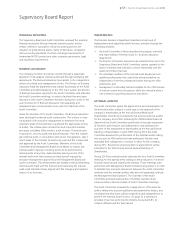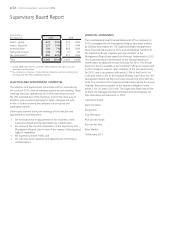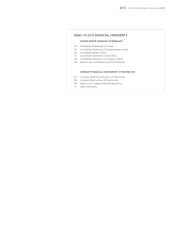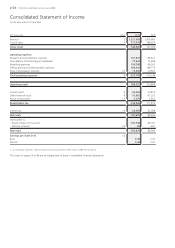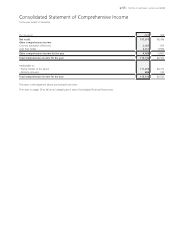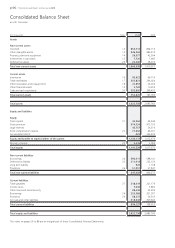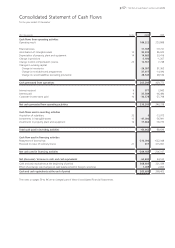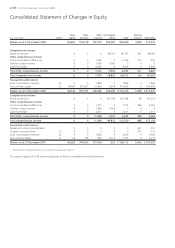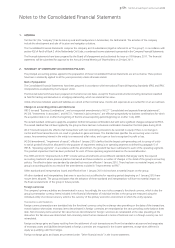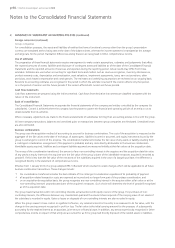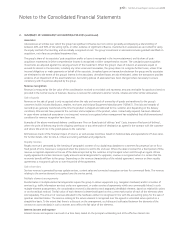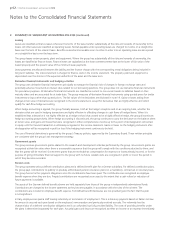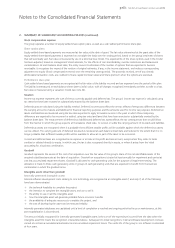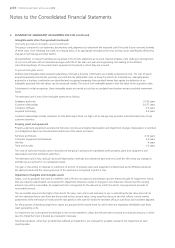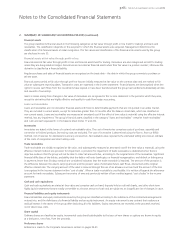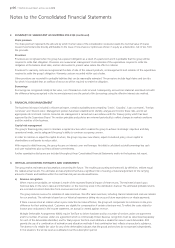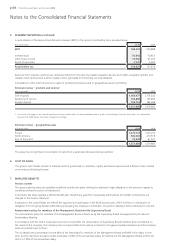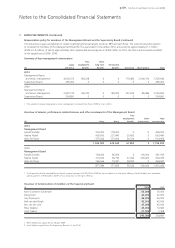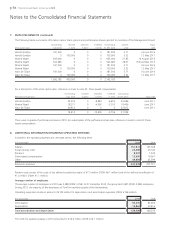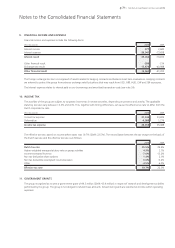TomTom 2010 Annual Report Download - page 63
Download and view the complete annual report
Please find page 63 of the 2010 TomTom annual report below. You can navigate through the pages in the report by either clicking on the pages listed below, or by using the keyword search tool below to find specific information within the annual report.p 61 / TomTom Annual Report and Accounts 2010
Notes to the Consolidated Financial Statements
2. SUMMARY OF SIGNIFICANT ACCOUNTING POLICIES (continued)
Associates
Associates are all entities over which the group has significant influence but not control, generally accompanying a shareholding of
between 20% and 50% of the voting rights, or other evidence of significant influence. Investments in associates are accounted for using
the equity method of accounting, and are initially recognised at cost. The group’s investment in associates includes goodwill identified on
acquisition, net of any accumulated impairment loss.
The group’s share of its associates’ post-acquisition profits or losses is recognised in the income statement, and its share of post-
acquisition movements in Other comprehensive income is recognised in Other comprehensive income. The cumulative post-acquisition
movements are adjusted against the carrying amount of the investment. When the group’s share of losses in an associate equals or
exceeds its interest in the associate, including any other unsecured receivables, the group does not recognise further losses, unless it has
incurred obligations or made payments on behalf of the associate. Unrealised gains on transactions between the group and its associates
are eliminated to the extent of the group’s interest in the associates. Unrealised losses are also eliminated, unless the transaction provides
evidence of an impairment of the asset transferred. Accounting policies of associates have been changed where necessary to ensure
consistency with the policies adopted by the group.
Revenue recognition
Revenue is measured as the fair value of the consideration received or receivable and represents amounts receivable for goods and services
provided in the normal course of business. Revenue is reduced for estimated customer returns, rebates and other similar allowances.
Sale of goods
Revenue on the sale of goods is only recognised when the risks and rewards of ownership of goods are transferred to the group’s
customers (which include distributors, retailers, end-users and Original Equipment Manufacturers (“OEMs”)). The risks and rewards of
ownership are generally transferred at the time the product is shipped and delivered to the customer and, depending on the delivery
conditions, title and risk have passed to the customer and acceptance of the product, when contractually required, has been obtained.
In cases where contractual acceptance is not required, revenue is recognised when management has established that all aforementioned
conditions for revenue recognition have been met.
Examples of the above-mentioned delivery conditions are ‘Free on Board point of delivery’ and ‘Costs, Insurance Paid point of delivery’,
where the point of delivery may be the shipping warehouse or any other point of destination as agreed in the contract with the customer
and where title and risk in the goods passes to the customer.
Estimates are made of the financial impact of returns, as well as sales incentives, based on historical data and expectations of future sales.
For further details, refer to note 4, Critical accounting estimates and judgements.
Royalty revenue
Royalty revenue is generated by the licensing of geographic content of our digital map database to customers for perpetual use or for a
fixed period of time. Revenue is recognised when the product is sold to the end-user. Where the data is licensed for a fixed period of time,
revenue recognition depends on the use of the data as reported by the customer or by the agent when sold through an agent. Where
royalty agreements contain minimum royalty amounts and arrangements for upgrades, revenue is recognised when it is certain that the
economic benefit will flow to the group. Depending on the revenue characteristics of the related agreement, revenue on these royalty
agreements is recognised upfront or over the period of the agreement.
Sale of services
Services revenue is generated by map update services, content sales and connected navigation services for commercial fleets. The revenue
relating to the service element is recognised over the service period.
Multiple element arrangements
Bundled sales or multiple-element arrangements require the group to deliver equipment (e.g. navigation hardware) and/or a number of
services (e.g. traffic information services) under one agreement, or under a series of agreements which are commercially linked. In such
multiple-element arrangements, the consideration received is allocated to each separately identifiable element, based on relative fair values
or on the residual method. The fair value of each element is determined based on the current market price of each of the elements when
sold separately. The amount of revenues allocated to the hardware element is recognised in line with the accounting policy for the sale of
goods as described above. The revenue relating to the service element is recognised over the agreed or estimated service period on a
straight-line basis. To the extent that there is a discount on the arrangement, such discount is allocated between the elements of the
contract on a pro rata basis in such a manner as to reflect the fair value of the elements.
Interest income and expense
Interest income and expense is accrued on a time basis, based on the principal outstanding and at the effective interest rate.


